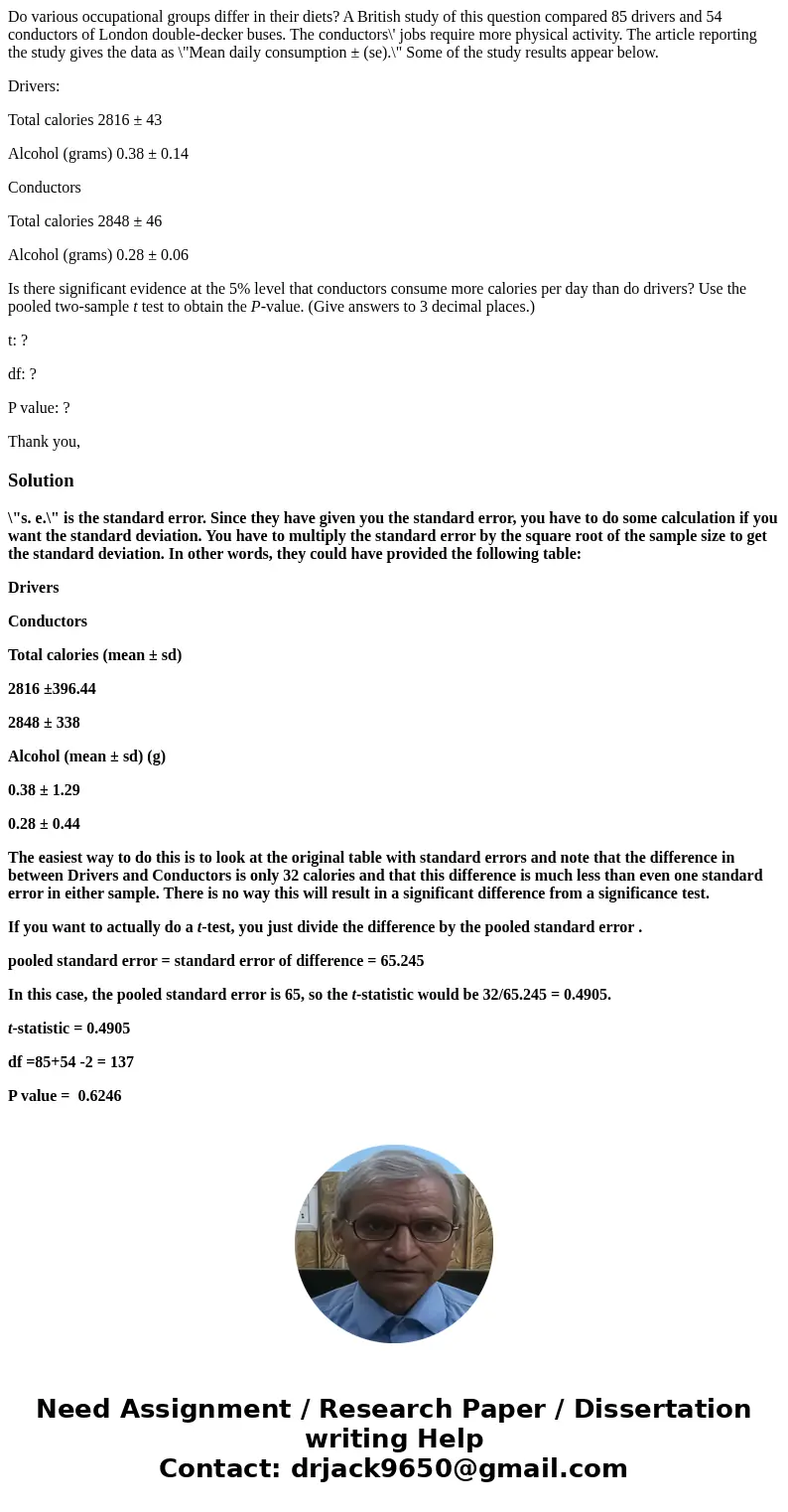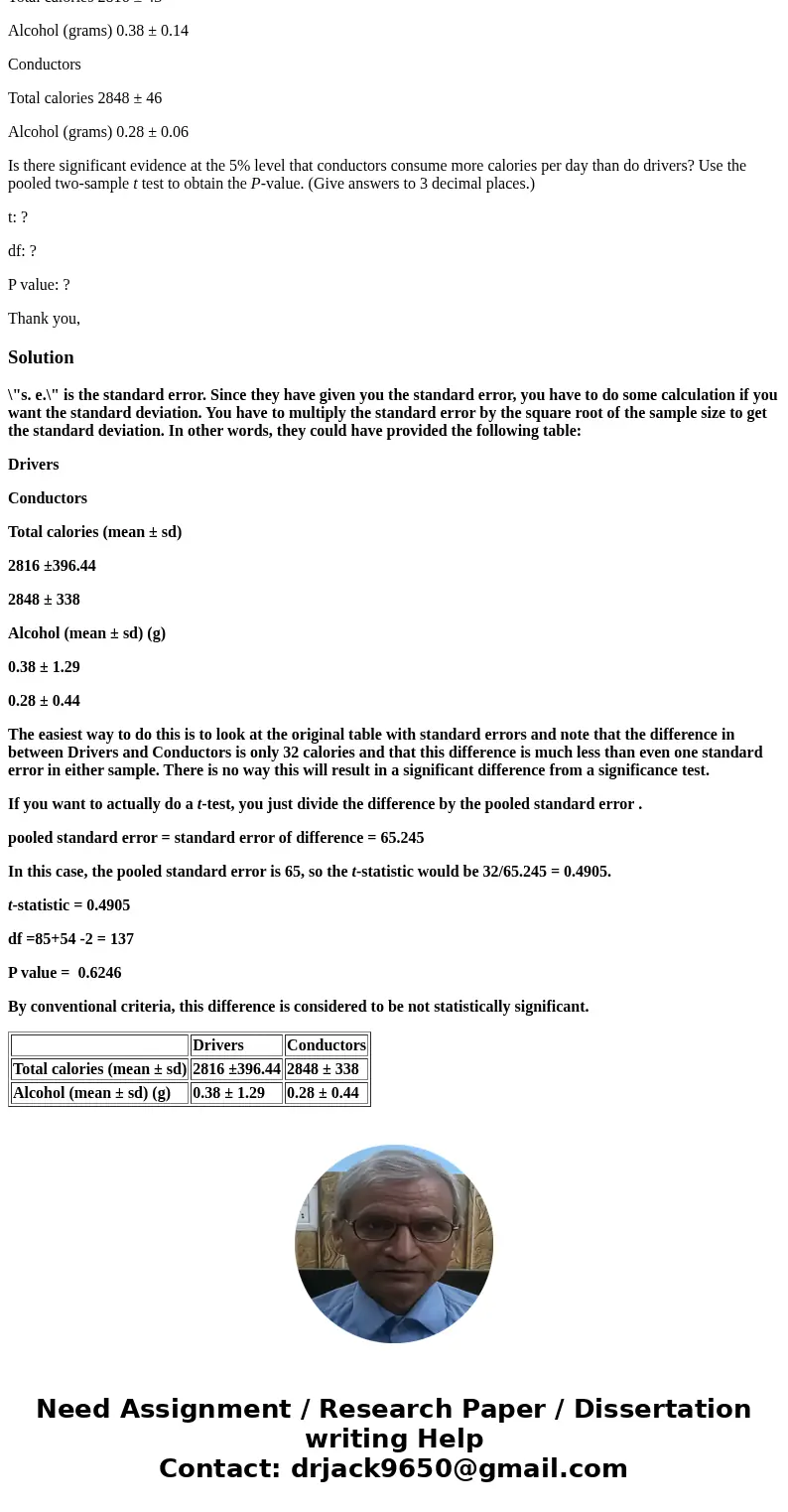Do various occupational groups differ in their diets A Briti
Do various occupational groups differ in their diets? A British study of this question compared 85 drivers and 54 conductors of London double-decker buses. The conductors\' jobs require more physical activity. The article reporting the study gives the data as \"Mean daily consumption ± (se).\" Some of the study results appear below.
Drivers:
Total calories 2816 ± 43
Alcohol (grams) 0.38 ± 0.14
Conductors
Total calories 2848 ± 46
Alcohol (grams) 0.28 ± 0.06
Is there significant evidence at the 5% level that conductors consume more calories per day than do drivers? Use the pooled two-sample t test to obtain the P-value. (Give answers to 3 decimal places.)
t: ?
df: ?
P value: ?
Thank you,
Solution
\"s. e.\" is the standard error. Since they have given you the standard error, you have to do some calculation if you want the standard deviation. You have to multiply the standard error by the square root of the sample size to get the standard deviation. In other words, they could have provided the following table:
Drivers
Conductors
Total calories (mean ± sd)
2816 ±396.44
2848 ± 338
Alcohol (mean ± sd) (g)
0.38 ± 1.29
0.28 ± 0.44
The easiest way to do this is to look at the original table with standard errors and note that the difference in between Drivers and Conductors is only 32 calories and that this difference is much less than even one standard error in either sample. There is no way this will result in a significant difference from a significance test.
If you want to actually do a t-test, you just divide the difference by the pooled standard error .
pooled standard error = standard error of difference = 65.245
In this case, the pooled standard error is 65, so the t-statistic would be 32/65.245 = 0.4905.
t-statistic = 0.4905
df =85+54 -2 = 137
P value = 0.6246
By conventional criteria, this difference is considered to be not statistically significant.
| Drivers | Conductors | |
| Total calories (mean ± sd) | 2816 ±396.44 | 2848 ± 338 |
| Alcohol (mean ± sd) (g) | 0.38 ± 1.29 | 0.28 ± 0.44 |


 Homework Sourse
Homework Sourse